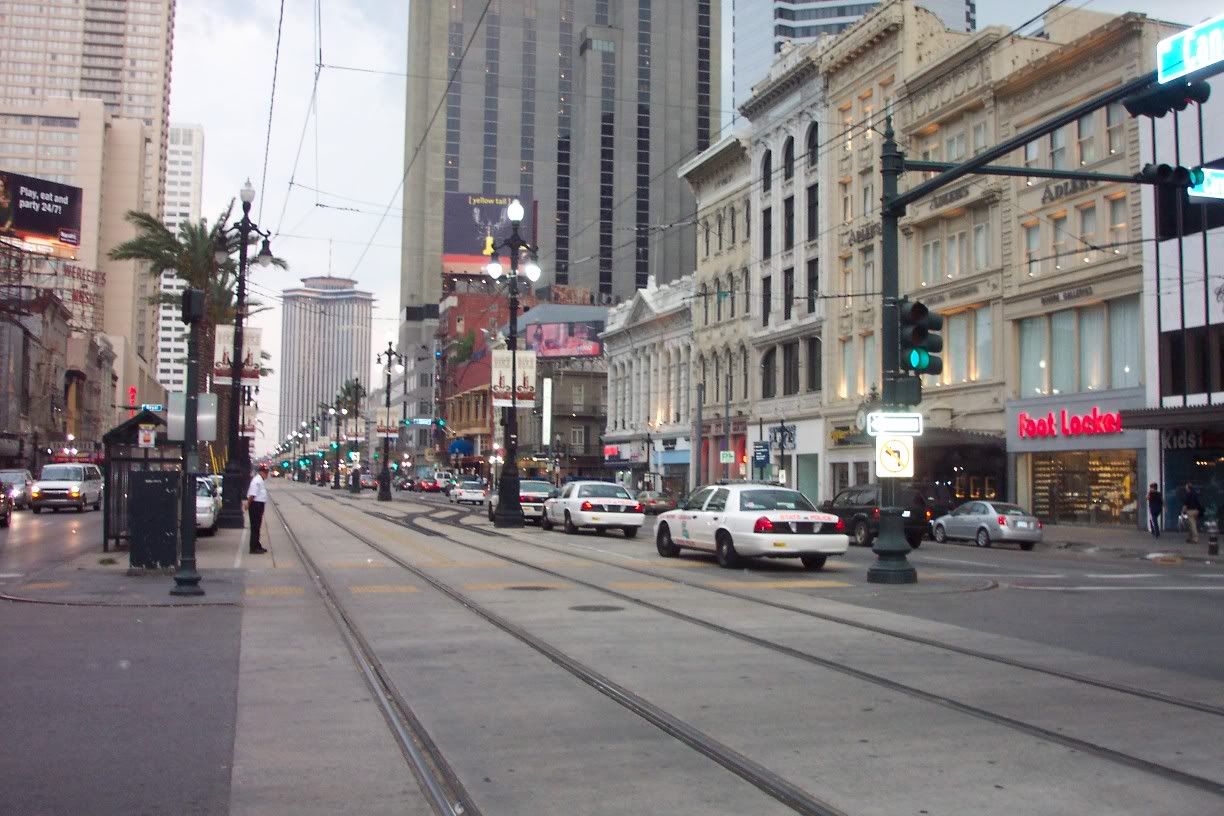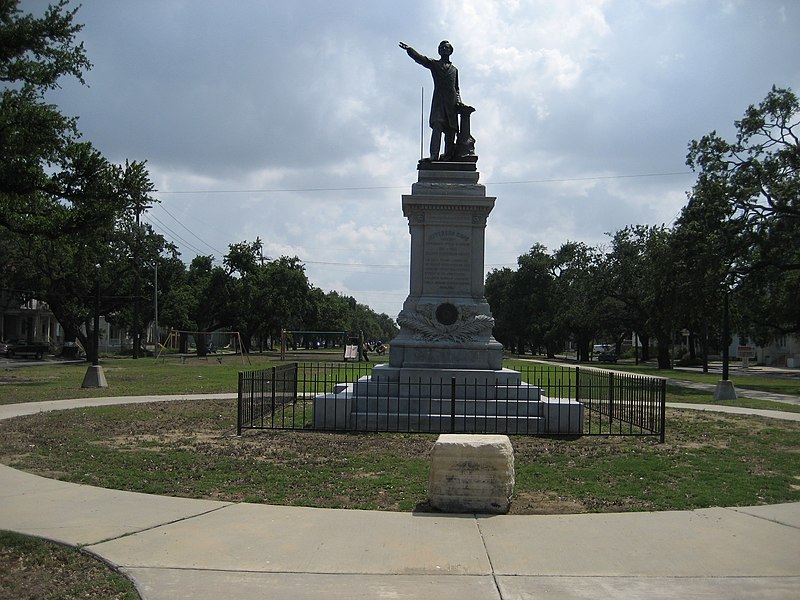It should also be noted that New Orleans is simply crazy about the neutral ground. Some are incredibly wide and feature walking paths. Others, even post-storm when New Orleans' Magnolia Trees were largely lost, are lushly planted and beautiful year-round thanks to the city's subtropical climate. St. Charles Avenue and yes, Canal, feature streetcar tracks in their neutral grounds. In almost all of them, spectacular Live Oaks contort above the streetscape as if inverted, their twisted roots on display instead of more orderly branches.

This is the St. Charles streetcar running through Uptown New Orleans. On days with good weather (defined as 68 degrees and up, light rain or less by native New Orleanians), you will see joggers and sightseers sharing right-of-way with the clanging streetcars.

Historic photograph of the Canal Street neutral ground, circa 1850s.

And a more current photo of Canal Street, now with streetcar tracks.

But, I digress. The point I'm trying to make is better demonstrated above (streetcars are a ways off for St. Louis). Here is an entirely doable project to improve pedestrian friendliness of St. Louis streets. Above is Jefferson Davis Parkway in New Orleans. It may look like a full blown park, but this in fact is a center median. It's huge--and it has the effect of slowing down traffic and providing a comfortable cushion for the pedestrian from the traffic that does exist. It's also very aesthetically pleasing.
 Oh, and these are Live Oaks, by the way. These have Spanish Moss growing on their branches.
Oh, and these are Live Oaks, by the way. These have Spanish Moss growing on their branches.St. Louis has some notable wide median streets. Private streets such as Portland and Westmoreland have them, as do public streets Bellerive, Reber Place, and Holly Hills on the South Side. Russell has a mini-median. Lewis Place, pictured below, is a prominent "medianed" street on the North Side.

If there is a lesson from New Orleans, it's that these medians, or neutral grounds, should be accessible, active public spaces, much like linear parks, rather than private gardens or mere decoration. Imagine South Kingshighway with a large, somewhat flat median (unlike the rather new medians placed on South Grand and Tucker Boulevard, which seem too tall and do not invite active use) in the center, attractively planted with greenery and walking paths. Traffic would be slowed and--gasp--pedestrians might feel safe crossing over to Tower Grove Park to the east. Instead of the street being treated as a literal highway, it might instead be a grandiose urban boulevard that both efficiently carries traffic and accommodates pedestrians. Plus, as New Orleans has also shown, these designs provide built-in opportunities for in-street light rail/streetcar transportation.
I say that St. Louis should shuck its neutrality and fully embrace the New Orleans-style neutral ground.
[Edit: (3/29/08) A New Orleanian kindly informed me that 60 degrees is, I quote, "cold."]



1 comments:
Check out Drexel Boulevard in Chicago. Chicago's southside is full of these boulevards that would be appropriate in St. Louis. I think we should start first with Forest Park Boulevard between SLU and Kingshighway.
Post a Comment